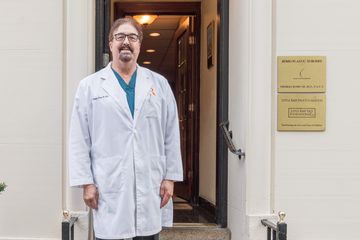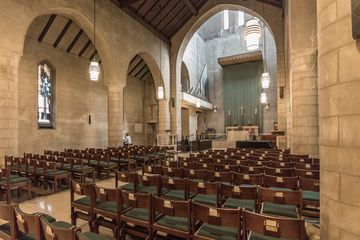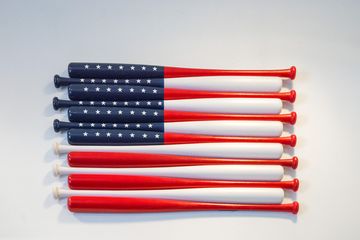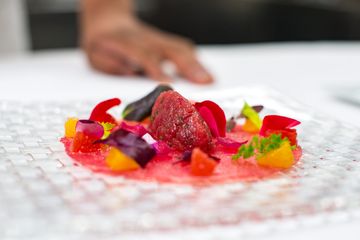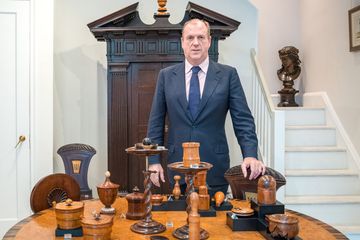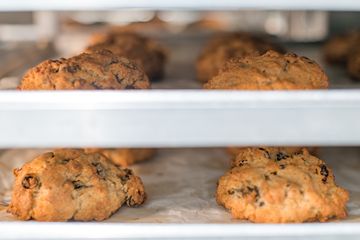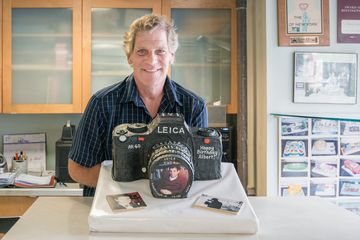If you do not already know of Levain Bakery, it is time that you did. Imagine my excitement to finally be on West 74th Street and able to introduce Tom and Olivia, members of the Manhattan Sideways team, to this exceptional bake shop that they had been hearing about for over a year. Knowing their love of anything freshly baked, gooey, and sweet, I had no doubt that this was going to be a special day. I have stood on the line to enter Levain many times with friends and family to purchase cookies. On this particular day, we were ushered inside and had the absolute pleasure of not only meeting the lovely ladies who have been baking their phenomenal cookies for the past fifteen years, but also getting to go behind-the-scenes to observe where the baking takes place. Unexpectedly, much of the history of this well-loved, independent Upper West Side bakery is tied up in athletics. Connie McDonald and Pam Weekes met while doing competitive swimming at the YWCA. Connie told us that when she arrived at the Y not knowing a soul, Pam warmly invited her to join her group. At the time, Connie worked in investment banking and Pam had a job in fashion at Norma Kamali. As their story goes, the two women, who had become fast friends, decided to train together for the Ironman. The constant physical strain left them very hungry, which inspired them to talk about opening a bakery. Whereas Pam grew up loving baking and "never had store-bought bread" in her house, Connie spent her childhood in a sweets-free environment and had done very little baking before meeting Pam. In 1993, Connie left her career and enrolled in Peter Kump's New York Cooking School. The two women started worked in wholesale at One Fifth Avenue, making bread for restaurants. They quickly started looking for a storefront, even though, as Pam said, "We had no money. " They were very close to opening on Avenue B and 3rd Street, but the deal fell through on the day they would have moved. Once again, however, they were led in the right direction by an active lifestyle: One of their friends was running in the park and then jogged along 74th Street on her way home. She spotted the vacancy, told the women, and in 1995, the two opened their bakery, naming it after a French word for a bread starter made with flour, water, and yeast. Contrary to what people may derive from the long lines continually wrapping around the block, Levain was not an immediate success. As Connie said, "When you start a business, you aren't immediately rolling in dough. " After several years of literally rolling in flour-filled dough, the two women admit that the bakery is doing very well. In fact, they have opened another location in Harlem and one in the Hamptons. When I asked if they had further expansions in mind, the women shook their heads. "We are very involved in everything, " Pam stated, mentioning that the bakery also does a high volume of mail order. Another shop would make it more difficult for the two women to be as hands-on. Also, as Connie commented, "We've never had a big business model – we just want to be a neighborhood bakery. "When we stepped outside to take some photos of the two women in front of their store, Pam broke away to look at the customers happily sipping Levain's locally roasted coffee around the doorway. "This is great – sometimes we forget how fun it is just to hang out here. " Connie nodded and added, "We used to hang out with the neighbors a lot more. " She described a day early on in their tenancy, before people came from miles around to sample the cookies, when the two women planted a tree and attracted a "block party" of passersby. As if summoned, one of their neighbors walked by as we were speaking to Pam and Connie and greeted the two owners. She was with her son, who had worked for Levain in the past, and so we witnessed a warm reunion. "I came in at the ground level, " the customer said, explaining that she was one of the first people in the door when the bakery opened. She then added, "These women are animal lovers of the first order. They give the dogs of the neighborhood so much love, and so stopping by Levain is a huge part of me and my dog's walk. "Connie and Pam told us that there are many customers who have been with them since day one. One neighbor, they said, came in on the first day they opened with his newborn, and now that baby is in college. "We love being on a side street, " added Connie, gushing about all the wonderful people she has met on 74th. Pam nodded, saying, "We are not cold or anonymous. " Despite the long line and the amount of press, Levain continues to be a warm, neighborhood - and, might I add, outstanding - bakery.
